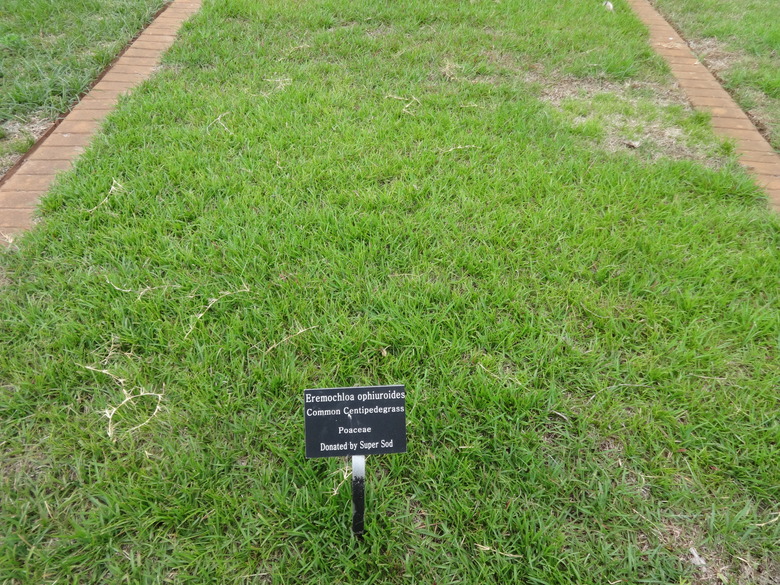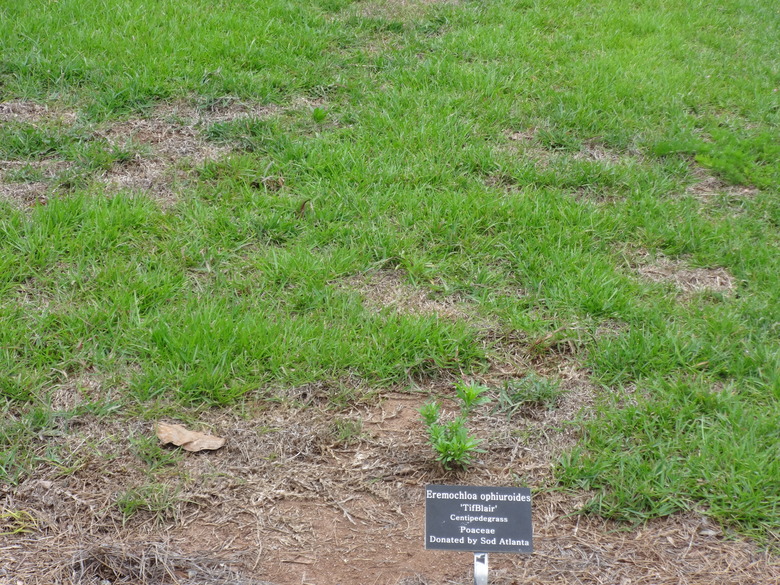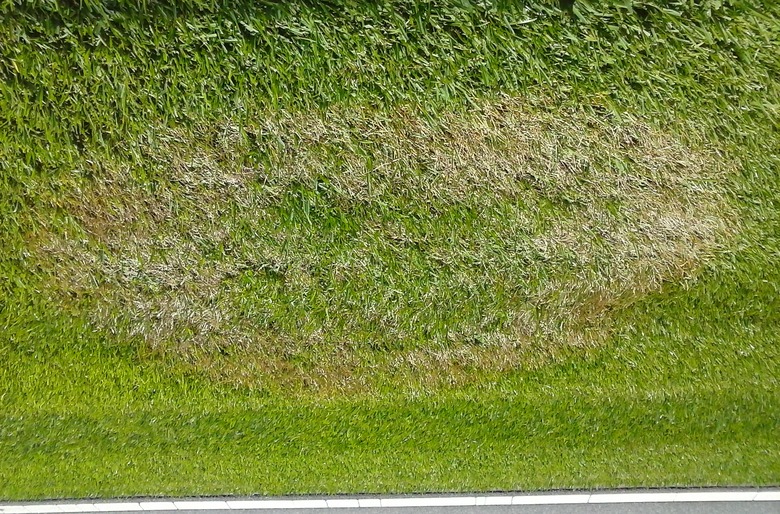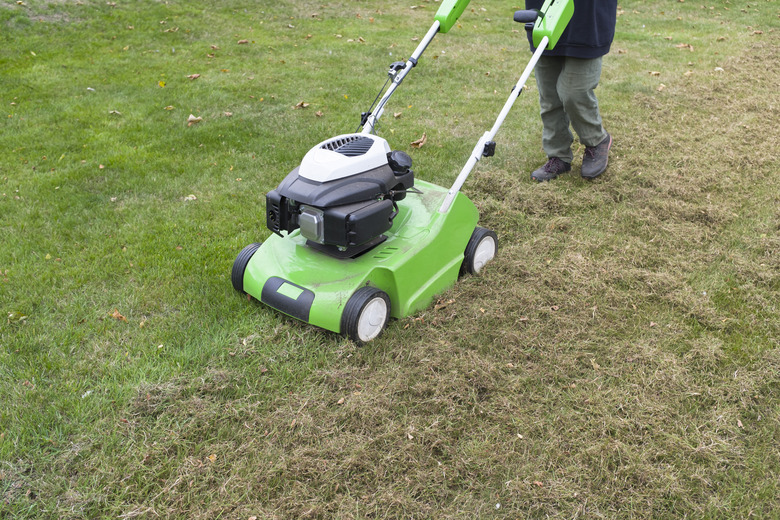Types Of Centipede Grass
Centipede grass (Eremochloa ophiuroides) makes a good low-maintenance turfgrass because it has a naturally short, spreading growth habit that requires less mowing and because it does not require much fertilizer. Sometimes called lazy man's grass, it grows best in U.S. Department of Agriculture hardiness zones 7 to 10, where it is used for low-traffic lawns.
Several centipede grass varieties have been developed by universities and plant growers, but only a few are widely grown, because most cultivated varieties do not grow from seed and must be started using more expensive vegetative methods such as sod and plugs.
About Centipede Grass
Centipede grass is a warm-season grass noted for its bright apple-green color and slow growth habit. It spreads via stolons and can take two to three years to establish a root system. However, once established, it is very low maintenance and will look good during the growing season with minimal upkeep.
Centipede grass grows best in acidic soil with a soil pH below 6.0. Well-draining loamy or sandy soil is the best soil type for growing a centipede grass lawn. As with many warm-season lawn grass varieties, centipede grass has poor shade tolerance and should be grown in full sun or light shade.
Tip
Heavy foot traffic, drought, excessive thatch and high pH soil will harm centipede grass, so it is important to choose a growing location carefully.
Centipede Grass Varieties
Most centipede grass varieties were developed to improve on the plant's cold hardiness, but some varieties also tolerate different soil types.
Oklawn Centipede Grass
Oklawn centipede grass (Eremochloa ophiuroides 'Oklawn,' zones 6 to 10) was developed by Oklahoma State University in 1965. It has greater tolerance for drought and cold winters than unimproved centipede grass, as well as a bluish-green tint to its foliage. Oklawn centipede grass grows best from plugs, sprigs and sod, although it will also grow from seed.
TifBlair Centipede Grass
TifBlair centipede grass (Eremochloa ophiuroides 'TifBlair,' zones 7 to 10) is one of the few improved centipede grass varieties to be widely grown from seed. It stands apart from other centipede grass varieties with its improved cold tolerance and its ability to keep its color during the autumn months when most other warm-season grasses begin to develop brown patches. TifBlair will also develop a deep root system in poor soil, unlike most other varieties.
TennTurf Centipede Grass
TennTurf centipede grass (Eremochloa ophiuroides 'TennTurf,' zones 7 to 10) is a cold-hardy variety that is a much lighter shade of green than other centipede grass varieties. It grows well in very poor soil, including soil with low nitrogen and very low soil pH. TennTurf is especially well suited to growing at high elevations where other centipede grasses might struggle.
TennTurf grass seed is viable, but it this variety is most commonly grown using vegetative methods such as sod and plugs.
Centennial Centipede Grass
One centipede grass variety that tolerates alkaline soil better than most is Centennial (Eremochloa ophiuroides 'Centennial,' zones 7 to 10), which was developed by Auburn University in 1983. Centennial is a semi-dwarf grass with a low and dense growth habit, as well as short seed heads that keep it looking tidier than other centipede grass varieties. It will only grow vegetatively, so it is not the most economical choice for homeowners with large lawns.
Growing Centipede Grass
Centipede grass is a low-maintenance grass variety, but it still needs to be grown and cared for in the right way to keep it looking good. Watering, fertilizing and mowing are three important parts of growing centipede grass, as is occasional dethatching.
Watering Centipede Grass
Centipede grass has a shallow root system that needs regular watering to prevent stress. Water deeply whenever the soil feels dry. The top 4 to 6 inches of soil should be thoroughly moistened after each watering.
Sandy soil dries out more quickly and needs more frequent irrigation. It should be wet to a 6- to 8-inch-depth after each watering.
Fertilizing Centipede Grass
Fertilizer requirements vary when growing centipede grass, depending on the soil type. It is best to have your soil tested before using fertilizer, but a good rule of thumb is to use no more than 2 pounds of nitrogen per 1,000 square-feet of lawn each year.
Potassium may be needed when growing centipede grass in sandy soil. Use a fertilizer such as 3-1-2 or 2-1-2, which contains potassium and nitrogen with little phosphorus, because phosphorus can cause iron deficiency in centipede grass.
Tip
Chlorotic centipede grass with yellow patches may need iron supplementation.
Mowing Centipede Grass
All centipede grass varieties have a naturally low growth habit that needs infrequent mowing, although occasional mowing is still needed to keep it looking tidy during the growing season. Adjust your mower to a mowing height of between 1 to 2 inches, which will produce a uniform height while helping prevent excess thatch buildup.
Dethatching Centipede Grass
Thatch is a layer of dead grass and roots that forms between the living grass and the soil surface, which can inhibit healthy germination and growth in a lawn. Centipede grass is prone to thatch layer build-up due to its dense growth habit, so dethatching the lawn periodically is an important part of good lawn care practice.
Dethatch between late spring and early summer when the grass is actively growing. Dethatch small patches of centipede grass by hand using a thatching rake, but most centipede grass lawns should be dethatched using a dethatching mower.



